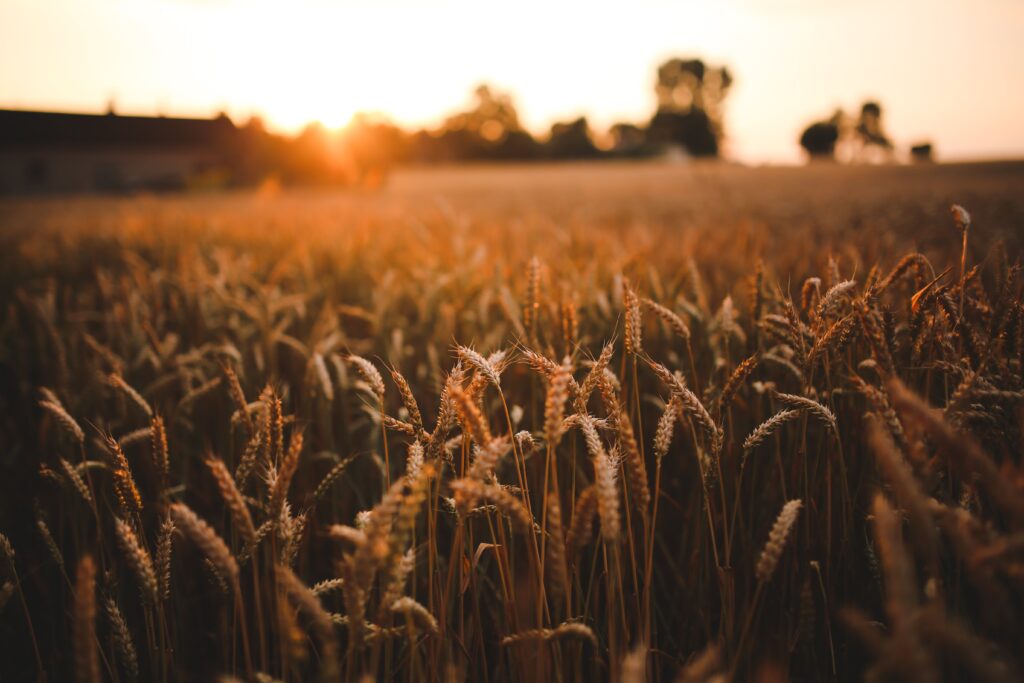Meeting Global Demand: Growing Wheat for the World Market
June 9, 2025
Though growing top-quality wheat is a challenge farmers face globally, here in Canada, we’re known for growing some of the best quality wheat in the world. Colin Hudson, P&H Western Canadian Sales Manager, shared details on the kind of wheat that the global markets are looking for and what Canadian farmers can do to meet these demands.
The world wants high-protein wheat
The protein content of wheat is a key factor in determining its marketability, especially for end uses like bread-making. Wheat protein directly affects the flour’s ability to form gluten when mixed with water and kneaded. Gluten gives the dough its elasticity and strength.
Dough made from high protein flour traps more gas during fermentation, leading to better ride, improved structure, and a chewier texture. That’s why high-protein flour is especially valued in the baking industry for making yeast-leavened breads and other products that require a strong, elastic dough.

As a full-service grain business working with farmers from seed to market and milling, P&H has a finger on the pulse of the domestic and export markets for wheat. We know that the most in-demand wheat right now is a 2 RED 13.5 – 13.8px, and we do our best to source wheat that meets those specs for our internal mills and export customers.
How farmers can influence protein content in wheat
Meeting market demand for high-protein wheat starts with crop planning. Choosing the right variety of wheat for your area and sampling the soil are critical steps to helping you achieve the best quality, high-protein wheat.
High protein content in wheat is a result of the proper amount of nutrients, specifically nitrogen, applied at the right time and in the right amounts. Other things to consider when it comes to nitrogen are:
- split applications,
- the use of nitrogen stabilizers,
- and irrigation water management, if that is an option.
How you harvest and store your wheat is also critical in ensuring the retention of the crop’s quality and protein. Harvesting too early or too late can significantly reduce seed quality, therefore reducing the protein content of your seed. Maintaining good storage conditions ensures you preserve the value of your production.

Keeping wheat healthy and disease-free
Plant health is also important for producing high-quality, high-protein wheat. If your plant is overcome with disease, it will be unable to fully develop and fill the seed properly due to an inability to carry out photosynthesis.
Keep your crop healthy by applying fungicides to prevent—and sometimes reverse—the effects of disease, which prevent the plants from reaching their full potential. Fungicides defend against diseases like Fusarium Head Blight (FHB), characterized by thin or shrunken chalk-like kernels. FHB-damaged kernels have a white or pinkish mold or fibrous growth, and causes the grain to have higher deoxynivalenol (DON)/vomitoxin levels.
Fungicides also help protect the test weight of wheat. Higher test weight allows the mills to realize higher yields in the milling process.
An additional application of nitrogen during the fungicide timing can also help ensure that you are growing the best high-protein wheat possible, as the majority of nitrogen taken up by the plant after the flag leaf’s emergence is translated into protein.
Your local P&H can work with you to ensure that your wheat crop has the nutrition and protection it needs to meet market demand. Talk to your local P&H agrologist today to learn how.
